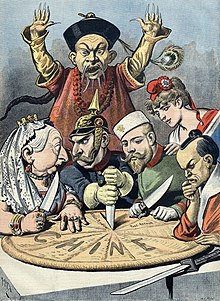
Back منطقة نفوذ Arabic Сфера ўплыву Byelorussian Сфера на влияние Bulgarian Esfera d'influència Catalan گۆڕەپانی دەسڕۆیی CKB Maes dylanwad Welsh Interessensphäre German Σφαίρα επιρροής Greek Influsfero Esperanto Esfera de influencia Spanish


In the field of international relations, a sphere of influence is a spatial region or concept division over which a state or organization has a level of cultural, economic, military, or political exclusivity.[citation needed]
While there may be a formal alliance or other treaty obligations between the influenced and influencer, such formal arrangements are not necessary and the influence can often be more of an example of soft power.[citation needed] Similarly, a formal alliance does not necessarily mean that one country lies within another's sphere of influence. High levels of exclusivity have historically been associated with higher levels of conflict.[citation needed]
In more extreme cases, a country within the "sphere of influence" of another may become a subsidiary of that state and serve in effect as a satellite state or de facto colony. This was the case with the Soviet Union and its Eastern Bloc after World War II. The system of spheres of influence by which powerful nations intervene in the affairs of others continues to the present. It is often analyzed in terms of superpowers, great powers, and/or middle powers.[citation needed]
Sometimes portions of a single country can fall into two distinct spheres of influence. In the 19th century, the buffer states of Iran and Thailand, lying between the empires of Britain, France and Russia, were divided between the spheres of influence of those three international powers. Likewise, after World War II, Germany was divided into four occupation zones, three of which later consolidated into West Germany and the remaining one became East Germany, the former a member of NATO and the latter a member of the Warsaw Pact.